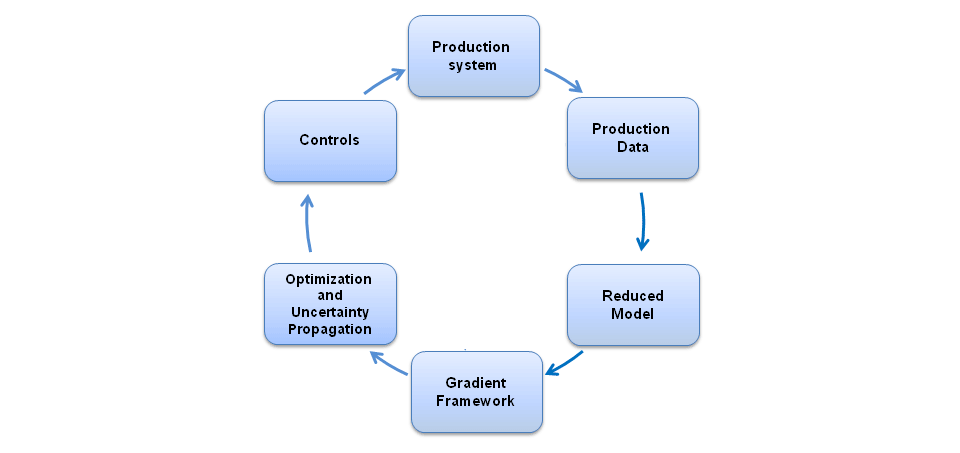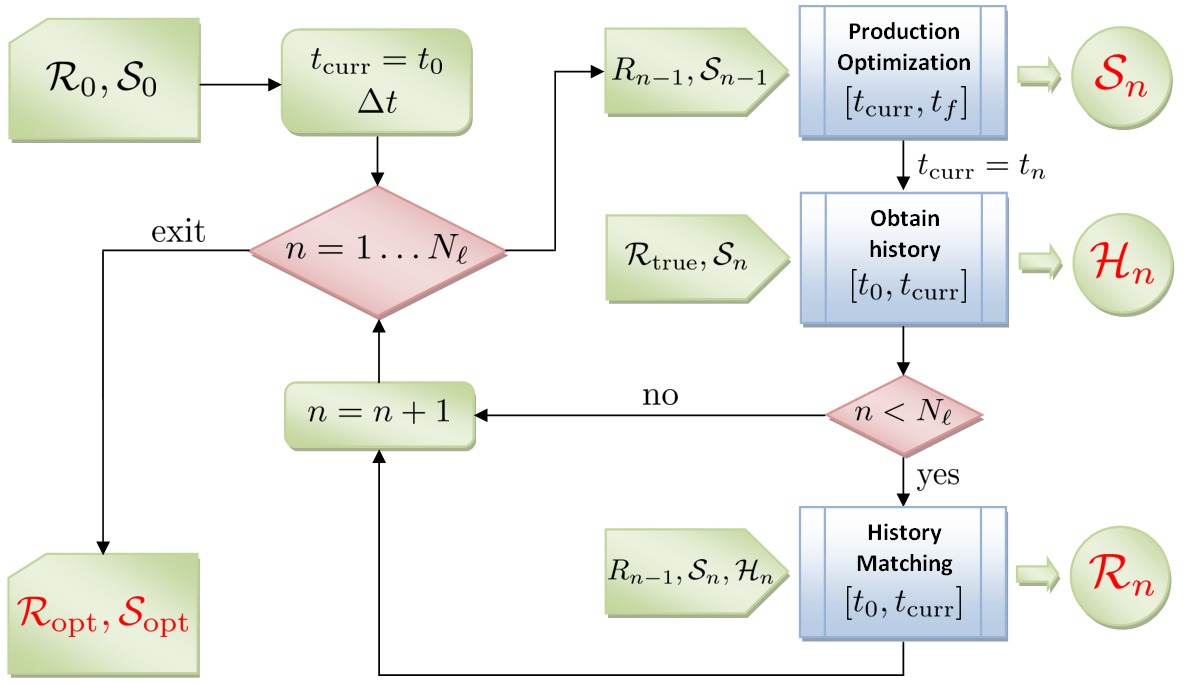Gradient-based Closed-Loop Reservoir Modeling (CLRM) Using AD-GPRS
The reservoir modeling and optimization capabilities that have been developed in recent years hold great promise for improving reservoir performance. Closed-loop reservoir management is one such strategy. CLRM, whichhas been widely studied, essentially involves periodic history matching and production optimization computations. Various minimization procedures have been applied for these computations, though our emphasis in this research is on gradient-based methods, with gradients computed using adjoints for both history matching and production optimization.

CLRM is illustrated schematically in figure above. The production system includes the field and facilities, in which production and seismic data are collected periodically. These data are then used for the model update step, in which the geological model or models are adjusted such that the predicted reservoir response closely matches the actual data. Time-varying optimal well settings (flow rates or bottom-hole pressures) are then determined based on this updated geological model. Hydrocarbon production using these controls proceeds until the next closed-loop step, at which time the geological model is again updated and the optimal controls recomputed. The loop is repeated for the duration of the production time frame. Because the geological model may be highly uncertain at early stages of production, the model and controls can change significantly during the course of CLRM.
The two areas most relevant to CLRM are production optimization and data assimilation. Our particular interest here is in gradient-based history matching which is very efficient if adjoint procedures are used to construct gradients and the adjoint-based history matching scheme utilizes both production and seismic data. Many previous research investigations have considered the combined use of production and seismic data, but little previous work has involved the application of a general adjoint-gradient procedure for both production and seismic data. Also, an important aspect of our work is the choice of an efficient nonlinear programming solver to ensure computational efficiency in the production optimization component of the closed-loop scheme. The automatic differentiation (AD) procedure used in this work enables us to obtain adjoint-based gradients for both production optimization and history matching. The AD technique has been implemented into Stanford's Automatic Differentiation-based General Purpose Research Simulator, AD-GPRS, using the Automatic Differentiation Expression Templates Library (ADETL).
Project Collaborators
- Khalid Aziz (Stanford University)
- Louis J. Durlofsky (Stanford University)
- Oleg Volkov (Stanford University)
References
- V. Bukshtynov, O. Volkov, L.J. Durlofsky, and K. Aziz, "Comprehensive Framework for Gradient-based Optimization in Closed-Loop Reservoir Management", Computational Geosciences 19(4), 877-897, 2015 (the final version of the paper is available at doi: 10.1007/s10596-015-9496-5).

